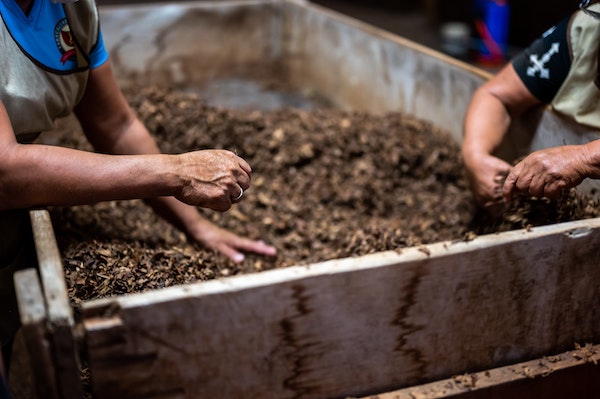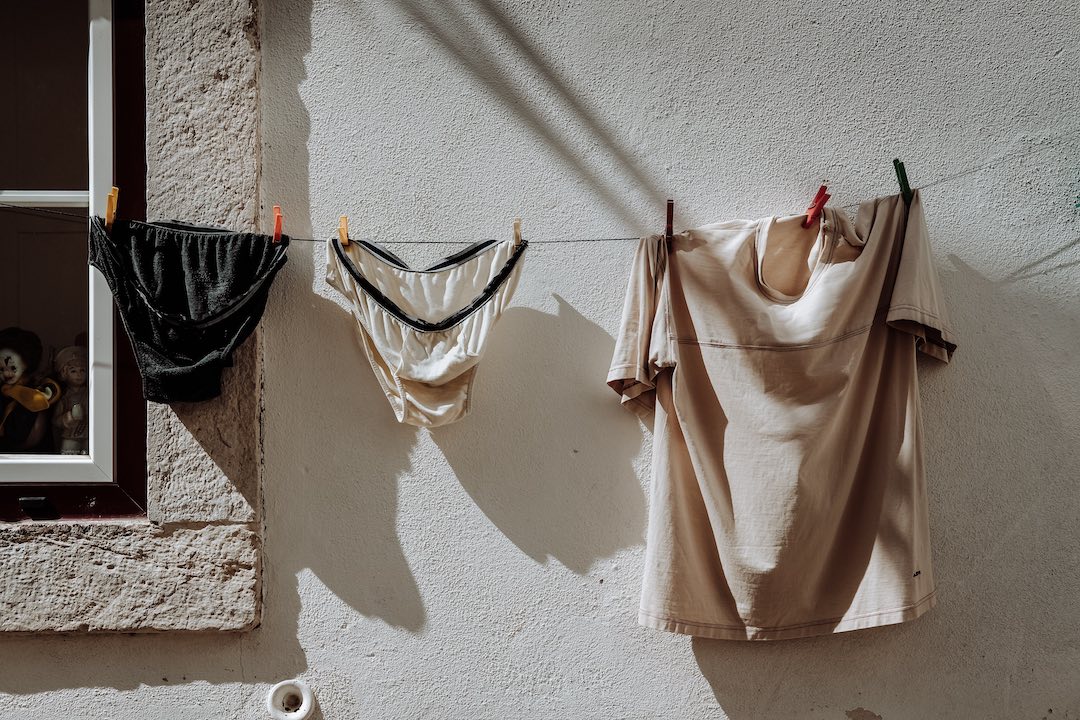There’s an—ehem—slightly awkward question that passes our thoughts from time to time: What do we do with our old underwear? Most people probably have a pair of too well loved underwear that needs doing away, but how do we do that in the most responsible and earth-friendly way possible?
A knee-jerk thought we can have is to donate old underwear. There are problems with that, though. First, you’ve used it. Donating used underwear feels suspicious at best, and downright gross the more you think about it. There’s always the option to keep wearing it until the final piece of thread that’s holding it together gives, but that’s not the smartest thing to do.

Unlike other countries, we don’t have a standard, centralized way of disposing waste. Old, used underwear counts as such, but more specifically, it’s textile waste. In an ideal world, getting rid of any type of waste would be as easy as segregating it and waiting for designated collectors to pick it up. Sadly, we’re going to have to try a little harder to make sure our garbage doesn’t end up in landfills or the ocean.
When it comes to underwear, or any type of fabric waste really, we have three options: upcycle, recycle, or compost.
Upcycle
Upcycling used underwear is the easiest option from the three—and our parents and grandparents have been doing it since before we were born. From a cultural perspective, Filipinos don’t like wasting anything. That’s why we have old ice cream containers and cookie tins filled with fish or sewing supplies. Those practices are already hallmarks of sustainability.
In essence, underwear is a piece of fabric. It just so happens that they’re designed to be intimate with our most intimate parts. After thoroughly washing and drying it, you can assess it for damage (like holes, ripped seams, and such), then figure out what to do with it.

Practically speaking, the easiest thing to do with an old pair of underwear is to collect it and sew it together to make rags. A household can never have too many rags, and it would be better for your wallet and the environment to make your own instead of buying.
You can also use it as a patch to mend your other clothes (like holes where the crotch of your favorite jeans should be) and other fabric-related projects. Old underwear can even find a second life as a sponge or a tawashi—which you can of course DIY.
Other ideas on how to upcycle your underwear include making headbands, scrunchies, pot holders, and even stuffing for flat and sad pillows. It only takes some creativity and elbow grease, but the upcycling possibilities are endless.
Recycle
While there aren’t many textile recycling facilities in the country, there are some stores and initiatives that accept textile waste. Fast-fashion chain H&M is trying to lower its carbon footprint by allowing customers to donate old clothes and other fabrics in exchange for a discount.
This specific move was panned by critics, calling it a marketing campaign to keep consumers coming back, but the company is making honest moves to become more sustainable—like investing in technology that’ll help make recycling textiles easier.
There are also local initiatives like Wear Forward that accept textile waste and old clothing so it can be turned into other garments. The initiative also has donation drop boxes in malls like Ayala Malls Harbor Point in Subic and Eastwood Central Plaza in Quezon City. If you don’t live in those cities but still want to donate, you can always get in touch with them through their website.
Aside from textile waste, they also accept items that can help them repurpose and upcycle clothing, like old dyes, scissors, sewing machines, thread, and garment racks.
If the clothes they receive are still in good condition, they sell them on their website at a marked down rate. Depending on the stock they have on hand, you can also rent, swap, borrow, or even claim clothes for free.
Compost
Composting food and food scraps are commonplace for enthusiasts and advocates. Composting textile, though? It can be a little new. It’s important to remember that underwear comes in a variety of different materials. Some of the more common ones are cotton, polyester, and spandex.
Knowing what material your underwear is made of is the most important step if you want to add it to your home compost bin. You can only compost your underwear if it’s 100 percent made of natural fibers like cotton, silk, linen, leather, or wool (how scratchy). If your underwear is made of a polyester blend, it’s impossible to compost because it won’t break down.

It’s estimated to take around 200 years for materials like spandex and polyester to decompose, so best to leave them out. Natural fabrics, on the other hand, can only take at best a few weeks to a handful of years to start composting.
If you’re composting underwear, make sure to remove all the buttons, fastenings, or other inorganic matter that’s attached to it. Cutting them into smaller pieces will also speed up the process. Lastly, adding worms to your compost pile will make things go even faster.
Finally, when in doubt, just upcycle. It’ll be safer for you and the environment.




